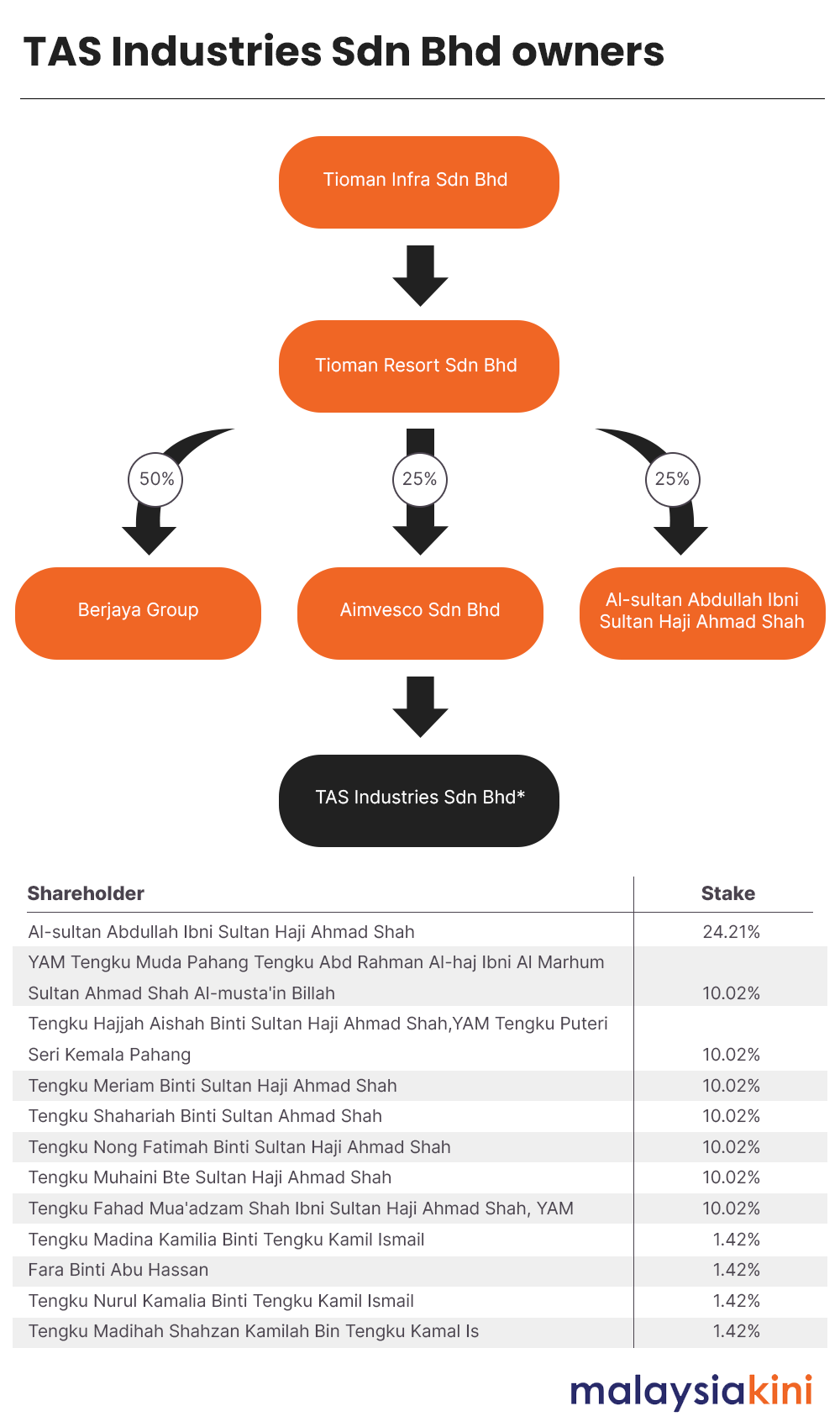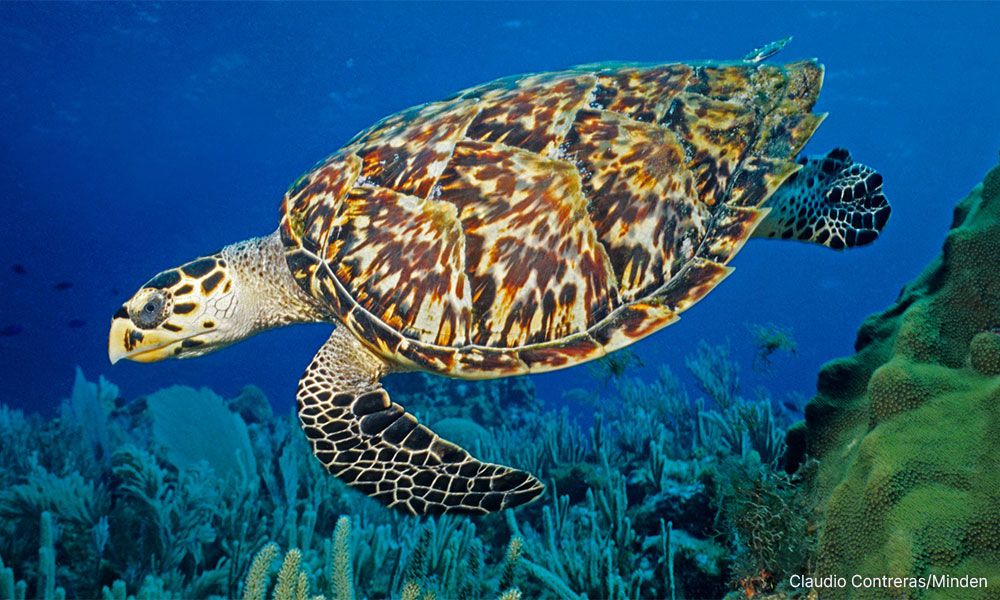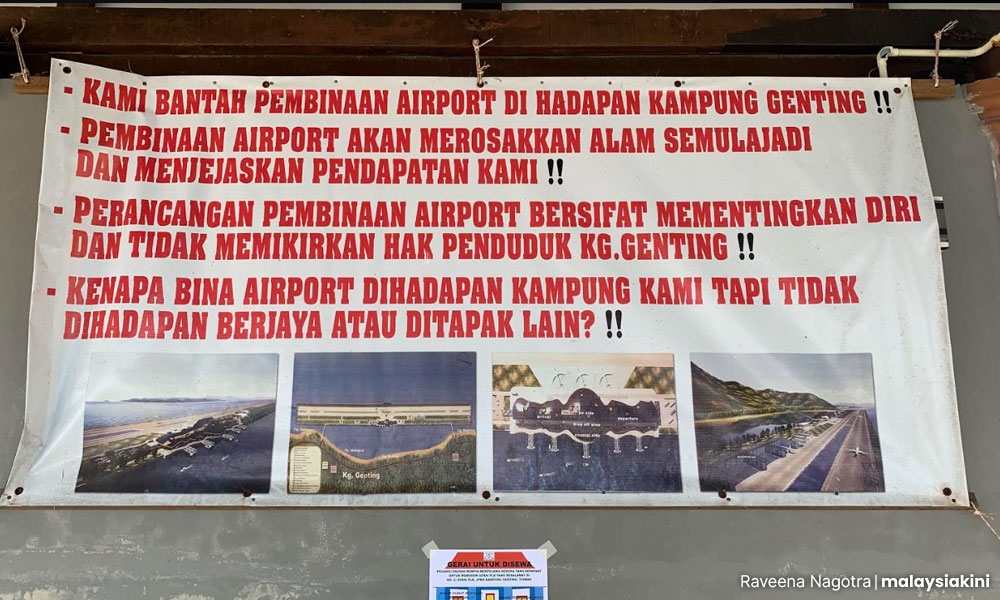At dusk, visitors to Kampung Genting in Pulau Tioman, Pahang, are usually treated to a magnificent display when the sun sets over the South China Sea.
For long-time Kampung Genting resident Azman Awang Mohd, this may only be a distant memory if plans to build an airport just off the coast of his village succeed.
“People come here to enjoy nature... If they build an airport in front of our village, that is all the visitors will see,” said the 52-year-old headman of Kampung Genting.
Azman is one of many Pulau Tioman residents who told Malaysiakini that they are against the project over fears that the new airport and subsequent influx of tourists will cause irreversible damage to the island. Tioman is famed for quality diving, tropical jungles and occasional whale shark sightings.
The tourism industry has been low impact on the environment. Only one commercial hotel exists while the majority of tourists are served by budget accommodations - mostly wooden chalets - dotting the beaches across the island’s east coast.
For most, it is accessible only by ferry when the tide is favourable.
Powerful project proponents
An inland airport was built in the late 1980s in Kampung Tekek, the biggest village on the island. With a length of only 992 metres (m) and adjacent to hilly terrain, this airport can only serve light aircraft.
Talk of a new airport capable of serving bigger commercial planes to allow greater tourist arrivals had been swirling since 2004.
In 2009, such talks were put to rest by the then transport minister Ong Tee Keat over concerns for the environment.

However, it was revived in 2018 by Berjaya Group, the biggest property owner on the island. The group’s executive chairperson Vincent Tan said at the time that the airport would cost up to RM1.2 billion.
Pahang Menteri Besar Wan Rosdy Wan Ismail’s cabinet approved the project in October 2019. It is now undergoing regulatory checks at the federal level.
The project proponent is Tioman Infra Sdn Bhd, a wholly-owned subsidiary of Tioman Hill Resort Sdn Bhd, which is 50 percent owned by the Berjaya Group. The rest is equally split between various members of the Pahang royal family through Aimvesco Sdn Bhd and the late Sultan Ahmad Shah.

Marine park to shrink
According to the revised terms of reference for the airport’s environmental impact assessment report sighted by Malaysiakini, the project will be 94.49 hectares (ha) in size, of which 65.77ha will involve reclaimed land from depths of 5m to 30m.
This portion of the project involving reclaimed land sits in waters within the Tioman Marine Park boundaries.
According to the Department of Town and Country Planning’s (PlanMalaysia) draft report titled “Special Area Planning on Tioman Archipelago 2030”, the area concerned is also a Level 1 environmentally sensitive area (ESA).
Under PlanMalaysia’s guidelines, Level 1 ESA areas should not be developed.

In order to proceed with the airport project, Tioman’s marine park status will have to be changed. In July last year, the state government hosted a meeting involving various stakeholders on redrawing the Tioman Marine Park borders.
According to those familiar with the meetings, Pahang’s economic planning division recommended two solutions. The first is a drastic redrawing of marine park boundaries, limiting it to just small islands or outcrops, leaving most of the main Tioman island’s coast outside park boundaries.
The second option is to maintain a substantial area on the western and south-western coast of the island from the marine park, which will include Kampung Genting and Kampung Paya, where the airport is to be located.
Environmental concerns
Some government agencies believe that excising parts of the marine park will expose environmentally sensitive areas to exploitation and destruction.
In correspondence with the project EIA consultant, the Pahang branch of the Department of Fisheries stated that the project would cause coastal erosion due to the changes in hydrology and a reduction in water quality during the construction phase.
The Fisheries Department is also concerned over the destruction of coral reefs, noting that the Tioman Marine Park had more varieties of corals than other marine parks on the east coast of Peninsula Malaysia.
Citing a 2006 study by Universiti Malaysia’s Maritime Research Centre (UMMReC), the Fisheries Department said the project site contained 306 species of corals, 100 macroinvertebrates, three types of giant clams, 209 species of coral fish and three types of seagrass.
“Twenty-five coral species are classified as very rare. This shows that this area is unique and important as a protected area due to its large diversity in coral species,” wrote the Fisheries Department.
The department also warned that noise pollution due to the construction and operation of the airport would discourage turtle landings. Juara beach on the eastern side of Tioman hosts a turtle sanctuary.

According to those familiar with the meeting on the redrawing of the Tioman Marine Park borders, the Biodiversity Management division of the Energy and Natural Resources Ministry also expressed reservations.
It noted that at 402.36 square kilometres, the Tioman Marine Park constituted 36.3 percent of the protected marine area in Peninsular Malaysia.
Therefore, the division said an ecosystem services valuation using the internationally recognised Economics of Ecosystem and Biodiversity (TEEB) methodology should be conducted before allowing the redrawing of marine park boundaries rather than relying on an EIA alone.
It also noted that Malaysia has never excised protected marine areas before, and doing so will set a bad precedent.
Any amendments to marine park borders will be under the purview of the agriculture and food industries minister, who currently performs functions and exercises power under the Fisheries Act 1985.
Can Tioman cope?
With the ability to cater for Airbus A320 and Boeing 737 jets, the new airport was envisaged to exponentially increase tourist arrivals to Tioman, including those on direct flights from southern China and India.
According to PlanMalaysia’s Special Area Planning on Tioman Archipelago 2030 report, the average annual tourist arrivals between 2013 and 2017 was 237,891. Tioman Infra Sdn Bhd estimates that with the new airport, annual tourist arrivals can quadruple by 2036.
This begs the question of whether Tioman, a small 136-square-kilometre island with mostly hilly terrain, is capable of sustaining an influx of tourists, particularly in areas of water, electricity and waste management.
Conversation group Reef Check Malaysia, in its policy document titled “Tioman as a sustainable tourism destination” published in 2020, had warned that with the new airport, unchecked tourism would likely follow.
While conceding that no reliable estimate of Tioman’s carrying capacity exists, Reef Check Malaysia warned that there is evidence that the existing infrastructure cannot support more tourists.
Among others, the group cited periodic water shortages, high levels of E. coli in some waters due to a lack of a centralised sewage treatment system, an incinerator (15 tonnes) operating at capacity and occasional blackouts due to limited electricity generation capacity (7.4 megawatts).
Transport infrastructure aimed at increasing tourist arrivals to Tioman, it warned, will open the floodgates to the construction of new resorts and supporting infrastructure.
“The silt released into the sea from land clearing will smother coral reefs and reduce water quality, further affecting coral health. Large numbers of tourists will generate more waste, adding to existing pollution levels,” it added.
Unchecked tourism, said the group, had forced temporary closures of similar marine holiday destinations such as Boracay, Philippines and Maya Bay, Thailand, for natural rehabilitation.
An alternative to the mass tourism model coupled with the airport project, Reef Check Malaysia advocates for a “low volume, high value” model to keep visitor numbers small and the environment intact.
And should a new airport be required, the group recommends that it be constructed on the mainland to spread the benefits of improved access more widely while avoiding damage to Tioman.
Locals don’t see the benefit
In recent years, Tioman residents in opposition to the airport project have organised themselves and held several protests.
Visitors are greeted by a protest banner at the Kampung Genting jetty.
The vast majority of Tioman residents or workers approached by Malaysiakini are against the airport for environmental reasons.
Others do not believe that the airport will bring any economic or social benefit to the island’s 3,700 residents.

Resort manager Idehan Harun, 44, said locals had been discriminated against by new business ventures before, citing how a resort operating out of a private beach refused to employ locals.
Locals also faced difficulty in applying for licences to operate duty-free outlets.
“Currently, no Tioman resident runs duty-free outlets, and no one trades at the marina. If the airport comes, I think it will be the same.
“Jobs and business opportunities will not come to us... We will be sidelined,” he said.
Boatman Rahman Saad, 40, from Kampung Paya, has heard rumours that the airport’s proponents plan to use local boatmen during the construction phase.
He, however, has no confidence this will be a permanent arrangement.
“Maybe after five years, they will buy their own boats. Later, they might remove the local boatmen and hire outsiders. A lot of business people are liars,” he added.
According to Reef Check Malaysia’s “Tioman as a sustainable tourism destination” paper, tourism in Tioman was driven by islanders running small-scale and family-run businesses.
“Tioman effectively has full employment, with most locals working in family businesses. Villagers who want to work are doing so.
“However, once tourism has grown to a certain size, economic growth usually benefits outsiders as resort development opportunities are beyond the financial capacity of residents, and large companies are attracted to the destination,” said the group.
Large resorts, noted Reef Check Malaysia, typically offer comprehensive meal and activity packages, taking away business from local communities providing the same.
The decision on whether the airport will be allowed to proceed as planned now depends on the Department of Environment, which is evaluating the third draft terms of reference for the EIA report.
PlanMalaysia has not responded to Malaysiakini’s queries if the social impact report for the project has been completed.
This article was made possible by the generous support of Internews. Annabelle Lee also contributed to this report. - Mkini




No comments:
Post a Comment
Note: Only a member of this blog may post a comment.